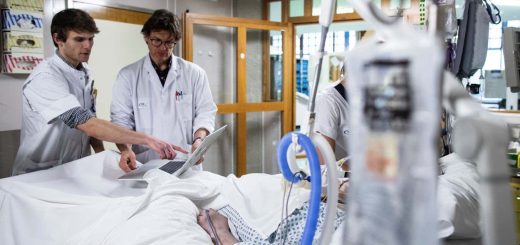Leukaemia drug shows promise at treating breast cancer once it spreads
A drug that is commonly used to treat chronic myeloid leukaemia stopped the most common type of breast cancer cells from dividing after they had spread to the lungs in mice
By Jason Arunn Murugesu
13 March 2023
A micrograph of oestrogen-receptor positive breast cancer tissue, showing slowly dividing cancer cells (red) that resist treatment, the cells’ nuclei (blue) and rapidly dividing cancer cells (green)
Dana-Farber Harvard Cancer Center at Massachusetts General Hospital/NATIONAL CANCER INSTITUTE/SCIENCE PHOTO LIBRARY
A repurposed leukaemia drug may be able to stop the most common type of breast cancer from causing tumours elsewhere in the body, according to a study in mice. The drug can cause side effects, however, and there is no way of telling who is most at risk of their breast cancer spreading, which may limit the treatment’s use as a preventative measure for secondary cancer.
Frances Turrell at the Institute of Cancer Research in the UK and her colleagues induced oestrogen-receptor positive (ER+) breast cancer in mice. This is the most common type of breast cancer in humans, accounting for up to 80 per cent of cases, and usually occurs in people over the age of 50.
ER+ breast cancer frequently recurs several years after seemingly successful treatment. This is because the cells can move to other sites in the body prior to treatment and cannot be detected before the therapy is initiated, says Turrell. “These cells essentially stay dormant and then something may trigger them to reawaken them.”
Advertisement
To learn more, the researchers gave young mice – aged 8 to 10 weeks – and older mice – aged 9 to 18 months – ER+ positive breast cancer. The mice, which were all female, weren’t treated for these tumours. Between two and five weeks later, nearly all had cancer cells at secondary sites.
In the young mice, these secondary site cancer cells didn’t divide into tumours, while in the older mice the cells were more likely to develop into tumours, which mainly grew in the animals’ lungs.
The researchers then found that tumour growth in the older mice was linked to an increase in the growth factor PDGF-C in the lungs, which occurred less in the younger mice.


